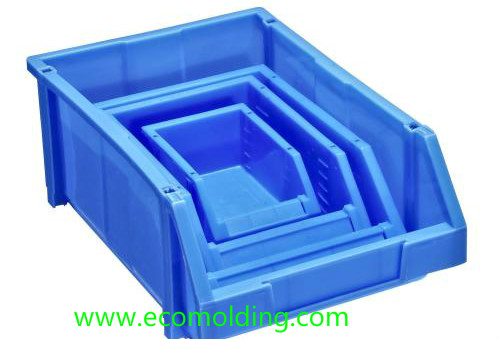
1. PP – Chemical Name: Polypropylene, Shrinkage Rate: 0.012-0.018%; Relative Density: 0.9-0.91 g/cm3
2. The appearance of PP: White, translucent and waxy when uncolored; natural color, cylindrical and smooth pellets of 2-5mm in any direction; odorless, non-toxic, and no mechanical impurities
3. The applications of PP: Suitable for the production of general mechanical, corrosion-resistant and insulating parts; commonly seen PP products include pots, barrels, furniture, film, woven bags, bottle caps, vehicle bumpers, television sets, radio casings, electrical insulating materials, anti-corrosion pipes, plates, storage tanks, flat yarn, fiber, packaging film, air duct, washing machine frame / cover, refrigerator door liner, lawn mower and water sprayer.
4. PP plastic injection molding performance
a. A crystalline material with low hygroscopicity, easy for the melt to crack, and easy to decompose when in contact with hot metal for too long.
b. Great fluidity, but the shrinkage range and shrinkage value are high; prone to shrinkage hole, dent and deformation, so the runner can be designed smaller, while the air vent should not exceed 0.03mm.
c. With a high cooling rate, the gate and the cooling systems for PP should allow for slow heat dissipation, with the molding temperature well controlled. The material features a low temperature, and is obviously directional, especially so under low-temperature and high-pressure conditions. When the mold temperature is lower than 50°C, the plastic products will not be smooth, leading to poor welding, and thus weld lines; easy to warp and deform under 90°C temperature conditions.
d. The wall thickness must be uniform; avoid underfilling and sharp corners to prevent stress concentration.
5. PP plastic injection molding Properties
Among the five general-purpose plastics, the heat resistance of PP appears to be the best. PP products can work at 100°C for a long time, and when there is no external force, they will not deform when heated up to 150°C. When the nucleating agent is used to improve the crystallization state of the PP, its thermal resistance can be further improved. Even, it can be used to produce a utensil for heating food in a microwave oven. The surface hardness of PP is relatively low among the five general-purpose plastics, only a little bit higher than that PE. Its hardness may accordingly increase with the level of crystallinity, but still not as good as that of PVC, PS and ABS.
6. The Modification of PP: PP can be modified by filling, reinforcing, mixing, copolymerization and crosslinking. Adding such fillers as calcium carbonate, talc, and inorganic minerals is able to improve the rigidity, hardness, thermal resistance and dimensional stability of PP (polypropylene); adding glass fiber, asbestos fiber, mica and glass beads can increase its tensile strength, as well as creep resistance and low temperature impact resistance; adding thermoplastic elastomer TPE/TPR or rubber can improve its impact performance, and transparency, etc.
7.PP plastic injection molding Conditions
Drying treatment: Drying is not required if stored properly. The pre-drying temperature is around 80°C.
Melting temperature: 220-275°C, but don’t exceed 275°C.
Mold temperature: 40-80°C, 50°C is recommended. The crystallinity is mainly determined by mold temperature.
Injection temperature: 180-200°C.
Injection pressure: Injection pressure is 68.6-137.2MPa, which can be as large as 1800bar.
Injection speed: High-speed injection molding can be used to minimize internal pressure. If defects appear on the surface of the product, low speed injection under higher temperature conditions should be applied.
Runners and gates: For the cold runner system, typical runner diameters range from 4 to 7mm. It is recommended to use a round gate and runner. All types of gates can be used. Typical gate diameters range from 1 to 1.5 mm, but gate as small as 0.7mm can also be used. For edge gates, the minimum gate depth should be half the wall thickness; the minimum gate width should be at least twice the wall thickness. The hot runner system is fully available for PP materials. To avoid shrinkage marks, large round nozzles and circular runners should be employed. The thickness of the ribs should be small (for example, 50-60% of the wall thickness). For products made of PP, the thickness cannot exceed 3mm, otherwise bubbles will occur (thick-walled products can only use copolymerized PP).
Please feel freely to contact us if you are looking for a professional plastic injection molding company.
